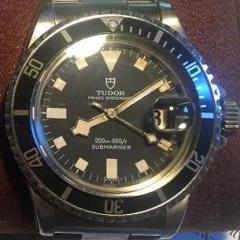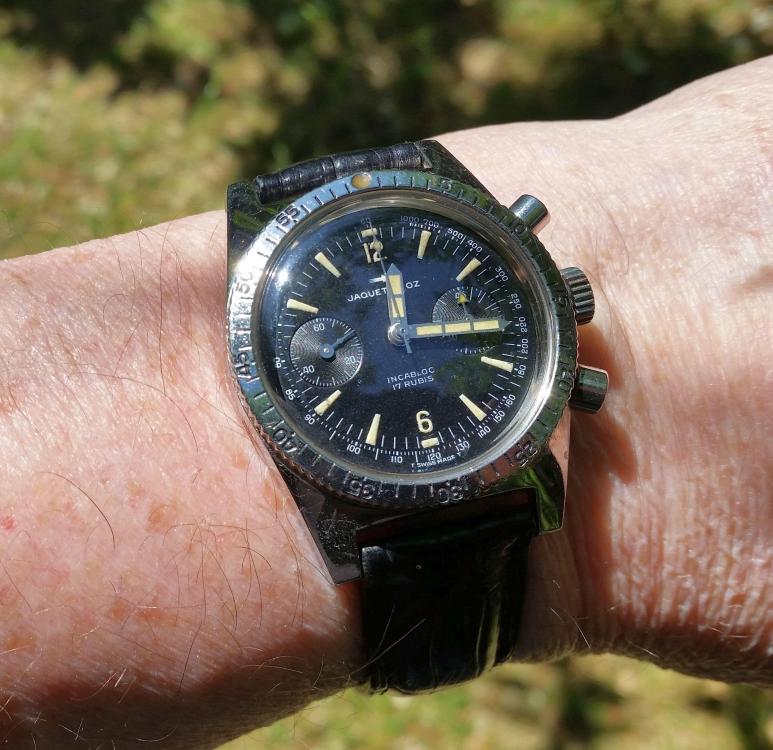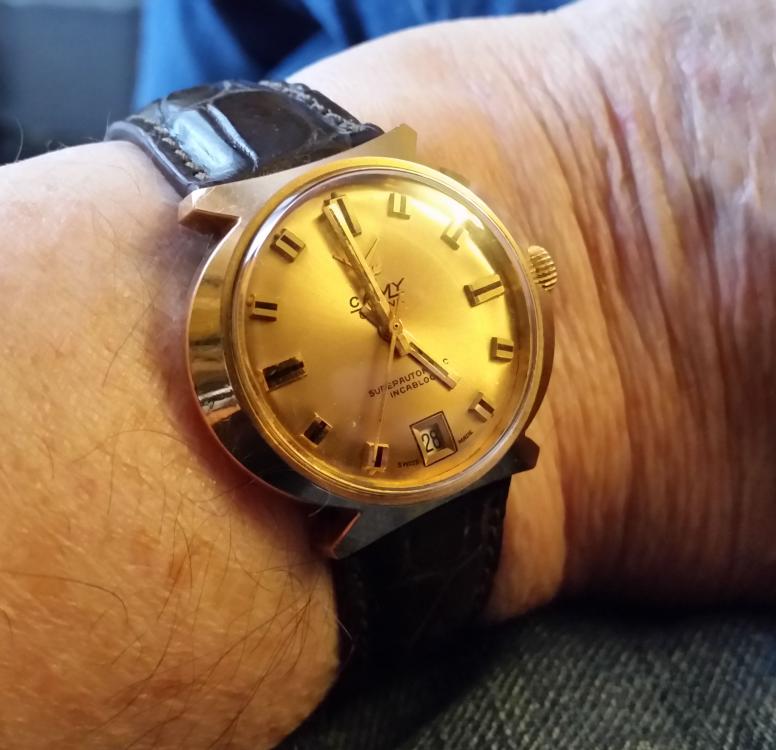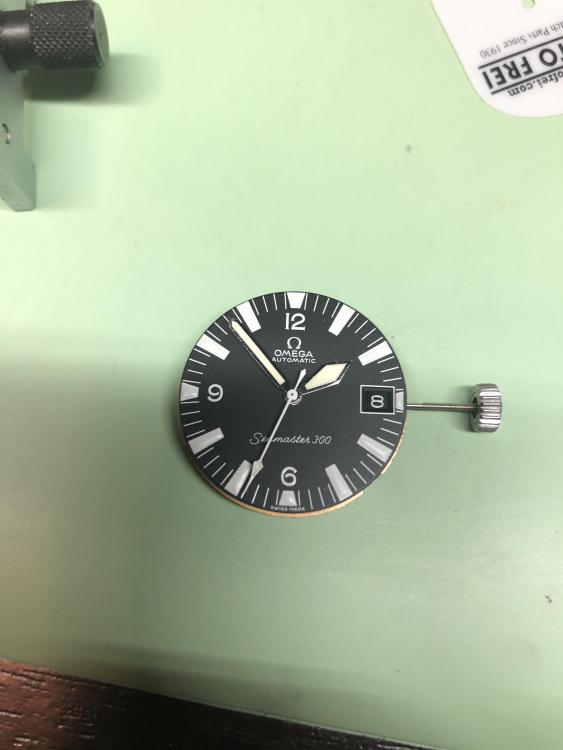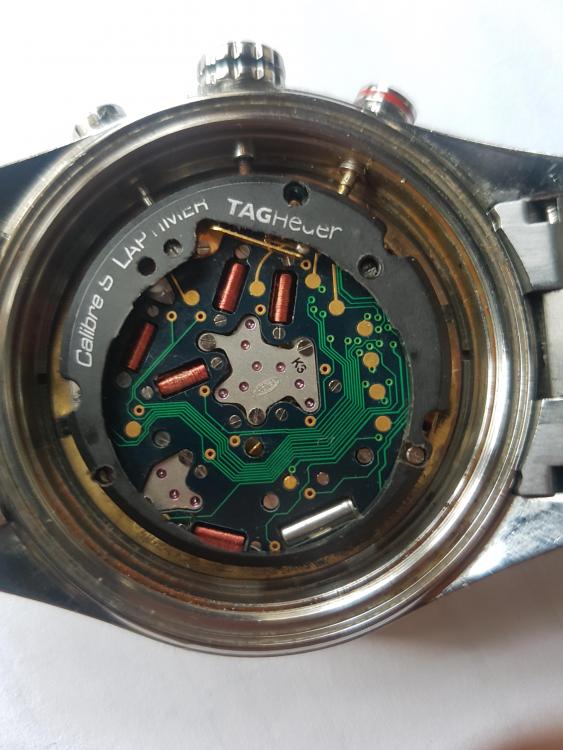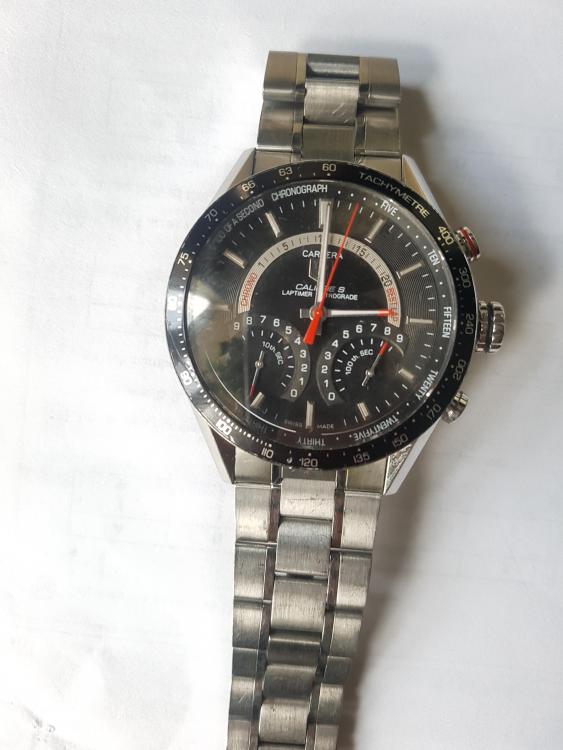Leaderboard
Popular Content
Showing content with the highest reputation on 10/10/20 in Posts
-
OT! Sorry, but I just can't help myself. I could probably do it for $25! It's a method developed by some specialized sellers of Russian watches on eBay, or so I assume. The movement, excluding the dial and hands if they have lume otherwise included, is dipped and agitated in a can of naphtha. It's then dried with a hair dryer. Finally some thin oil is injected here and there where needed using a fine syringe. The watch will be ticking and it will look as good as new! Seriously, after four years in this beloved hobby of mine, I find it a bit of a miracle that anyone, even a professional and skilled watch repairer can properly service even a standard 17 jewel watch (like the Unitas 6497) and only charge $500 or less doing it. Sure, the right tools, experience and skill make a huge, huge difference, but I personally still lack the imagination to really understand how it's done. Just the cleaning process, pegging, polishing pivots, checking and adjusting shake, perhaps replacing a jewel, and so on, can easily take me a day or two of work. If I'd try to make a living servicing and repairing watches (without cutting any corners) I'd slowly starve to death. Although with a smile on my face.?2 points
-
2 points
-
don't know where I read it but somewhere I've seen a suggestion that some of the eBay sellers perhaps don't dip the watch in the cleaning fluid but they apply it to the dirty movement to loosen up the gummy lubricants so the watch can run. Then the watch can be sold as a running watch versus of nonrunning watch. Usually with the wording of that no guarantee of timekeeping etc.1 point
-
Update: So following your suggestions and calculating the two options I had - I've purchased a balance complete off ebay.1 point
-
You don't have to live near the watch repairer, I have all servicing jobs that are beyond my skill level done by Rich Askham, who lives a couple of hundred miles from me. Never actually met him but all dealings are done by post using Royal Mail Special Delivery service.... Here's one he did earlier for me.... and currently have this with him for a service and cannon pinion tighten......1 point
-
Well, he may be a competent at doing the repair and service work, but he needs to improve his communication skills, otherwise you are going to be on a wild goose chase and wasting time and money on parts you don't need. I'm guessing what he means by "half-moon mechanism" is the automatic winder, maybe just the rotor, maybe the reverser wheels, or whatever is in a Tudor like that. But that is just a guess. In any case, you are going to need to know the movement i.d. and get an exact description, (in conventional watchmaking terminology) of which parts are worn. Pictures would be good. Then, if you are lucky, someone on here will give you a parts list and part numbers to help your search.1 point
-
1 point
-
sometimes my answers are confusing because I use dictation software. Sometimes dictation software does not like me and words aren't always correct. If I tell you swapping hairsprings does not work and is bad especially if you're new to watch repair the general reply is you want to do it anyway so the best way to learn is to do it. I'm not the one spending the money and you're the one who gets to learn the lesson. I was trying to find something about the watch and the link below will be helpful. As far as I can tell for replacement parts especially on the balance complete its either the 1520 with a 1525. On eBay they sometimes include other numbers are other calibers and I'm not sure that that's technically correct. only curiosity you have a service bulletin for this watch? The parts list has something of interest possibly helpful possibly not. So traditionally you cannot swap hairsprings on balance wheels because the hairspring has been matched to that specific balance wheel. But you physically can swap the hairspring they just are not going to match in timekeeping will suffer. The problem will be as to how the timekeeping sufferers? I was studying the balance wheel on eBay and it has those peculiar things on the balance arm. Rolex calls them inertia blocks. So looking at the technical sheet in the parts list we get something interesting? There is a reference to washers which the wording is really strange ethical snip out the picture for you. There is no place to put timing screws on a screwless balance wheel but maybe they put washers under the under inertia blocks? Otherwise I don't know what these washers are and they're not clear specifications are interesting. If they are timing washers between the regulator the blocks themselves and timing washers it would give you a much greater range of adjustment. But zero idea whether that would be enough to get the watch to keep time. Because changing the existing hairspring is also considered a bad thing to do. so no matter what swapping in the hairspring and getting the watch to keep Rolex time is going to be problematic. it would be better to find somebody to change the balance staff. https://watchguy.co.uk/service-repair-rolex-air-king-5500-calibre-1520/1 point
-
I emailed the owner of that site with the details on my watch. He's pretty sure it isn't NOS, but is a frankenwatch created using a 2209 movement with a new case, dial, and hands. I'm not too peeved about that. I'm not averse to getting a replica using an old movement. I just wish the seller had been honest about it.1 point
-
Finally back on this and I’m going to overhaul it. Pinions looks dry so I oiled the visible ones and there apparently was still old oil in there because it’s been running worse and worse since. It looks a bit grungy on the polished surfaces anyway so I’m going to do it. Hopefully it doesn’t take a month.1 point
-
1 point
-
1530 "Balance with Breguet hairspring, timed" P/N 7855 1560 "Balance with Breguet hairspring, timed" P/N 7980 Now, my 1530 sheet is the older one, with the " butterfly" rotor. I cannot determine if the parts are interchangeable from my scans. It could be a simple upgrade with the newer movement or it could be an incompatible part.1 point
-
1 point
-
1 point
-
Hello Robyn and welcome to the forum, The attached publication will help you with the terminology. cheers TZIllustratedGlossary.pdf1 point
-
Hey guys long time just wanted to share some finding with you, I have been searching for a way to clean vintage watch lume, particularly in Seiko's which seems to be one of the top brands where collectors look for clean original lume. Esp when it comes to the 6105's, re-lumes kill the value of these, an old moldy patina lume is better than a re-lume, but is obviously not as good as nice clean white lume. These pull in prices that go for about double the cost of an original moldy lumed one. SO i picked up an all original 72' 6105 very clean, except for dial it wasnt that bad really but one of the markers was a coffee color much darker than the other which where like a nice off white cream color, some tiny black mold spots. it was really getting on my nerves so as usual i did my research again and find out that every forum post and every person i spoke said the only thing you can do is re-lume? now i have seen pros like spencer klein clean up lume without reluming but he always skips that part in his videos, a master will never reveal his secrets....so i did something i wanted to do for a very long time but was always afraid to do.........I used bleach, YES BLEACH! Now, this will only work on water based lume, and it does NOT dissolve it any way......you must must be very careful to only get it on the lume and NOT on the dial. I have tried it on many scrap dials and what i found is it wont affect metal dials much but it will affect matte dials, black dials, and dials with any kind of paint. I used a tiny cotton swap used for car touch paint for chips and i soaked in 3/1 or even 2/1 water/bleach solution. i made sure to remove excess and then i would carefully dab the lume plots until i can see it has been absorbed. In some cases i put a tiny bead of the solution on top of the plot and leave it for about 30 min. then soak it back up. This will require more than one application depending on how dark the lume is. I also used a dry swab and gently wiped the top of the lume plot and this removed almost all of the black mold. I went from cream/coffee color to an off white....i am trying to post photos but i cant for some reason...i didnt have a before picture but i will be doing a few more soon on a 6309 dial i will post the before and afters.1 point
-
I have been meaning to give this a go too. Glad to see you had good results with it. I'll need to give it a try. Bleach, more specifically hypochlorite bleach is what is in those expensive bottle of spray on mould cleaner you get in the supermarket. In other words, you could just use diluted household bleach and get the same affect. It also kills the mould, so hopefully stopping it in its tracks. You would need to be very careful with the stuff obviously, as it will affect a lot of things with colour or pigment in. Hydrogen peroxide used in some hair bleach products may also work, and may be more suitable for some substrates than hypochlorite. Testing on scrap dials will give you some idea of what will work where.1 point
-
If you can’t find one that fits exactly then buy an oversized one and stone the edges down on a diamond lap until it fits.1 point
-
Correct. I usually work on the older versions, which do not hack. be sure it is clean and dry, and installed right-side up. It should slide in and out with the stem. Test that before assembling further.1 point
-
As has already been mentioned in this thread, I would also encourage you to take a look at the British Horological Institute's correspondence course. It is excellent and the qualification is recognised if you complete and pass the exams. The only downside for you I guess is that (and I could be wrong) the exams need to be completed at the BHI HQ near notts, England. But most of the work is distance learning and you do get access to a tutor I believe. On the plus side, it could be a nice little vacation when you do need to complete the exams1 point
-
Yes, happened to me before. Usually it's the Chinese movements that have this problem. It traumatized me so much that I have a phobia of opening incablocs. The problem is using fine tweezers to hold the spring and trying to muscle the end into the hinge hole. It'll will rotate and ping into oblivion. I found a simple solution to this. You need to hold both ends of the incabloc spring simultaneously in order to manipulate it into the hinge. I used a pair of eyebrow tweezers for this, about 3-4 mm wide. ( Just borrow one from your boss when she's not looking. ) Grip across the entire spring, get one end of the spring into the hole first then muscle it in or use a screwdriver to nudge the other end in. Works everytime. But it still give me the shivers to pop open an incabloc.1 point
-
0 points

